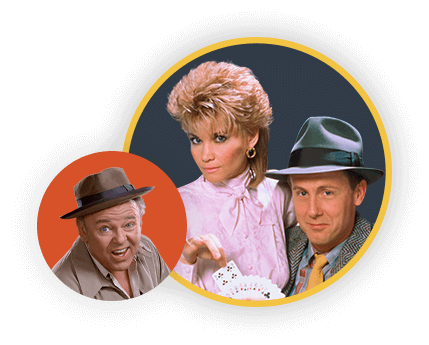10 shining facts about 'Rudolph the Red-Nosed Reindeer'

Image: NBCUniversal
The 1960s produced some of the most revered holiday specials of all time, including A Charlie Brown Christmas, How the Grinch Stole Christmas! and Frosty the Snowman. But it all started with Rudolph.
Over 50 years ago, Rudolph the Red-Nosed Reindeer debuted in primetime on NBC. It has run every year since, making it a family tradition. Perhaps you watched this special as a kid, watched it with your kids growing up — or maybe even watch it with your grandkids now.
To put it simply, it's just not the holiday season without this stop-motion special. The next time you watch it, remember these 10 facts.

The character was created for a department store.
In 1939, Montgomery Ward commissioned one of its catalog copywriters, John May, to dream up a character for the coloring books the department store handed out to children visiting Santa. The company gave out nearly 2.5 million books that year alone.
Image: Today I Found Out

The song has close ties to the original story.
May's brother-in-law, Johnny Marks, wrote the famous tune a decade after the story for Montgomery Ward. Marks might as well have had a PhD in writing Christmas songs. He can claim credit for writing "Rockin' Around the Christmas Tree," along with other songs featured in Rudolph the Red-Nosed Reindeer like "Silver and Gold," "There's Always Tomorrow" and "A Holly Jolly Christmas."
Image: Associated Press

It's the king of Christmas specials.
Having been broadcast every year since 1964, Rudolph the Red-Nosed Reindeer stands as the longest-running Christmas special on television.
Image: NBCUniversal

Rudolph is smaller than you think.
The puppet used for Rudolph is only four inches tall. Santa stands twice as tall at eight inches. Bumble is the tallest puppet of them all, measuring a whopping 14-inches tall.
Image: NBCUniversal

Santa and Rudolph went missing.
Sadly, most of the puppets used in the program went missing shortly after production, including Santa and Rudolph. However, the two were rediscovered in 2006 on Antiques Roadshow. Apparently, a woman who had worked for the production company stored them in her attic since the 1970s, even letting her children play with them from time to time!
Image: PBS

The original broadcast had one oversight.
In the version of the special that ran in 1964, Rudolph, Hermey and Yukon never return to the Island of Misfit Toys at the end, despite saying they'll do so. This oversight prompted fans to send angry letters to the network. The next year, a short scene was added in which Santa delivers the misfits to new homes.
Image: NBCUniversal

Most of the voice actors were Canadian.
It makes sense, especially because the special took place at the North Pole.
Image: NBCUniversal

The animation was produced in Japan.
While the voice actors recorded their parts in Toronto, the stop-motion animation took place in Japan. In total, Rudolph the Red-Nosed Reindeer took 18 months to produce, a staggering amount of time for a TV special in the 1960s.
Image: NBCUniversal

Rudolph and Hermey were neighbors.
Billie Mae Richards, the voice of Rudolph, and Paul Soles, the voice of Hermey, ended up becoming neighbors later in life. During the early 2000s, they both lived at the Performing Arts Lodge in Toronto, a housing development for artists and actors.
Image: NBC Universal

The snowman was meant to resemble Burl Ives.
The famous performer lent his voice to Sam the Snowman, the narrator of the special. If you thought the character resembled the actor, you'd be right! The animators deliberately modeled Sam to resemble the actor.
Image: NBC Universal




